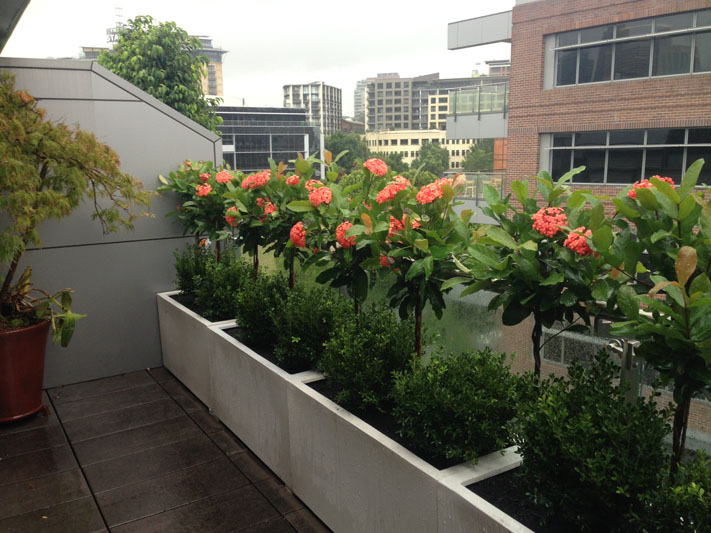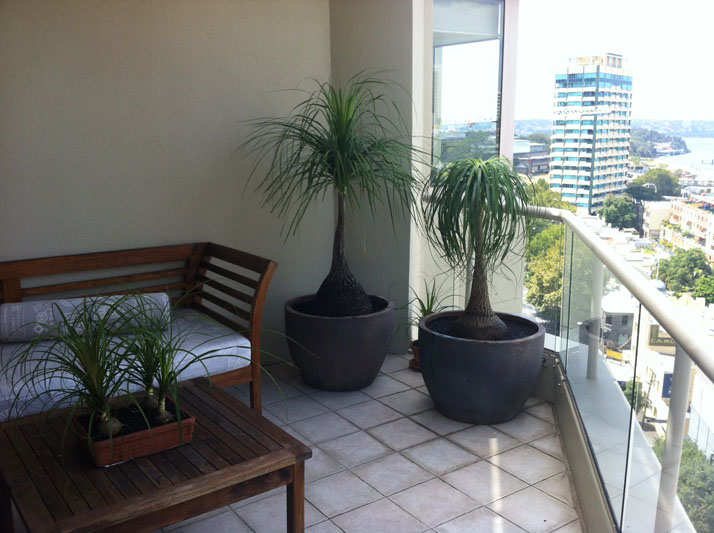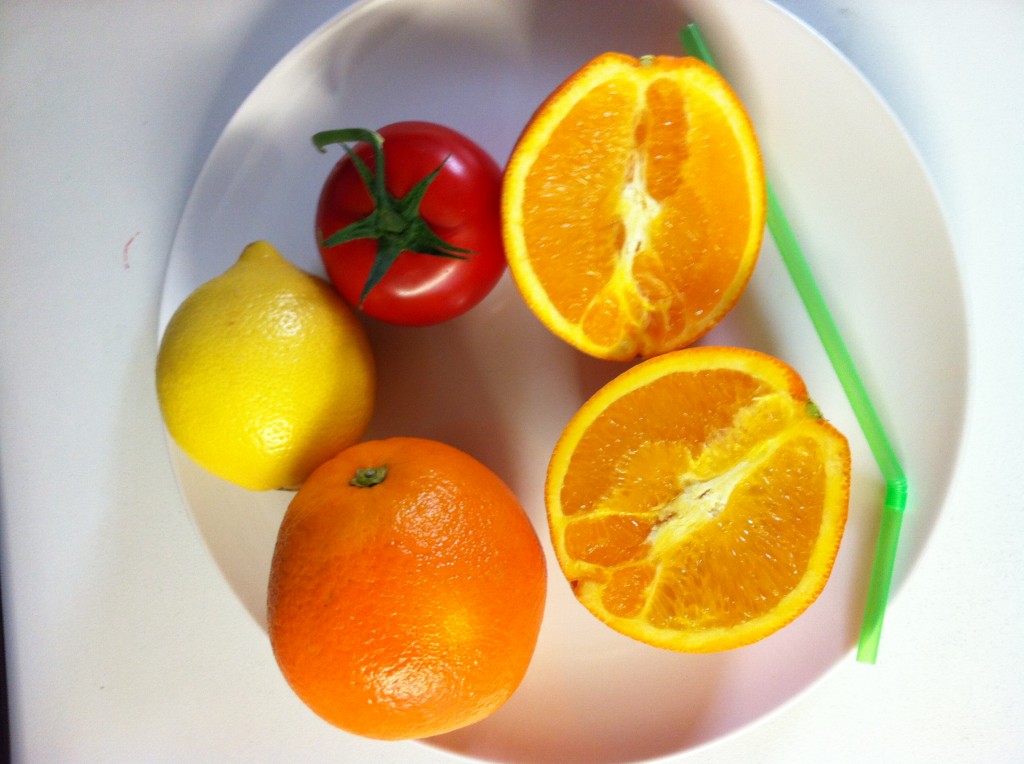gardening advice

Annandale Garden Centre offer some really great services that we hope everybody can take full advantage of to make your Home Garden (Indoor & Outdoor) as great as it can possibly be!
This page has been setup to share some handy Gardening Tips and Suggestions to help you with potential difficulties or problems that you may be experiencing in your Home Garden.
To extend our "free advice" service to our online site, we encourage our customers and gardening friends to post any Questions, Difficulties or Discussion Topics for us to answer via our Facebook Wall !
Balcony Garden Improvements
With an extensive range of products available combined with our practical gardening advice, here at Annandale Garden Centre we are well equipped to undertake Balcony Improvement work for selected clients.
Your outdoor area can really become a valued extension of your living space. We have ideas on Colourful or Feature plants, Low Maintenance plants, Lightweight pots, Screening plants for privacy etc. along with all the Accessories (such as Water Features) that you might require to establish or revamp your balcony garden……and the good news is…..yes ! we can put it all together for you (subject to quotation).
We encourage you to come take advantage of our in store consultation, where our staff can provide options and suggestions on suitable plants and pots available. We look forward to assisting you in improving your Balcony Garden.
How often should i water my potted plants?
This is one of the most common questions (other than what time do we close today?) that we get asked here at the Garden Centre and i wanted to give you a few guidelines on the main factors when considering this question for yourselves. Plants are all different like us humans and we need to treat them differently with varying frequencies of watering throughout the year.
With so many variables such as the weather, the season, the size of a pot, the amount of sun vs shade, indoor or outdoor, the type of plant etc…..there are numerous factors that influence your watering regime for a particular pot plant.
Im going to break it down into 3 main areas of consideration;
The First – Understanding your plant
Different species can tolerate certain extremes in soil conditions – one extreme being dryness and the other being moisture. It is up to you to know where your plant fits on the moisture scale. For example plants like Cactii and Succulents, Yuccas and Draceanas can tolerate long periods of dryness. On the other end of the scale you have plants like Ferns, Palms and Bamboo which are quite thirsty plants and appreciate more moisture. To help find this information it will often say on the tag, you can utilise the internet or even direct any relevant questions to our Annandale Garden Centre Facebook Wall as part of our free advice service.
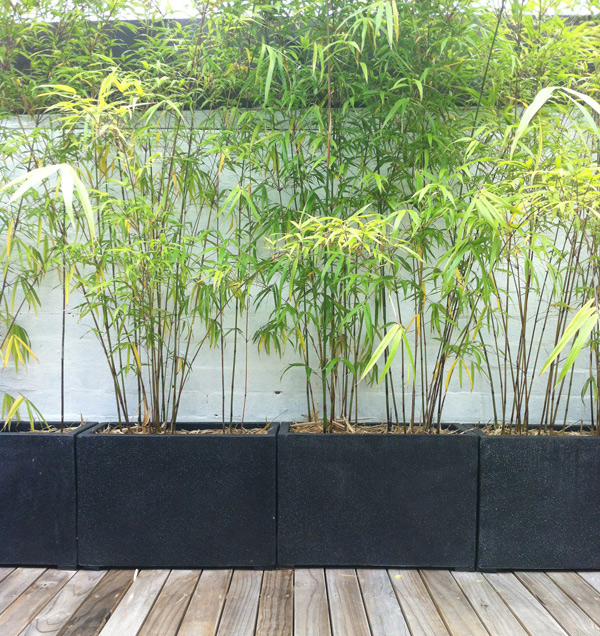
Dont be afraid of trial and error.
The Second – How much moisture is actually left in the soil
One way to assess if a plant requires watering is knowing how much moisture is left in the soil. Not just checking the top layer which will always dry out first, but gaining an understanding on what is actually happening at the bottom of the pot. The best way to determine this is the put your finger in and check. You wont need to do this every time but you may be surprised to see the difference in moisture content between the top and the bottom of the pot. !
Note the symptomns of a drowning plant can often be the same as symptomns of a drying out plant. Plants wilt which appears to mean its dry but in actual fact by adding more water you are drowning the plant instead.
The Third – How quickly is the pot drying out
The main factors to look at here are the Size (and Shape) of the pot, how much direct sun or wind is the plant exposed to and also the quality of potting mix used. In short, a smaller pot will dry out quicker than a large pot and to a lesser extent, a shallow pot will dry out faster than a tall pot. A pot plant in direct sunshine is going to dry out faster and require more frequent watering than a pot plant inside or in the shade. Indoor Plants will generally dry out slower than outdoor plants as its generally cooler with less air flow, therefore the wind doesnt play a part in drying the soil like it does outdoors.
Beware of saucers full of water which often add to the demise of a potted plant. Plants with “wet feet” can keep the potting mix saturated which prevents drainage and necessary air flow through the soil. Appreciate there is a difference between moist and saturated soil.
Hopefully this info can help you save some potted plants in the future and keep them looking great.
What Can We Plant in our Edible Garden?
Get in While the Growings Good !
What a popular topic for discussion as the cost of Organic Food rises higher and most people seem to be eating healthier too. Growing your own vegies and herbs is not only fun and good exercise, it can also be particularly rewarding and potentially contribute to saving some costs and also improving health in your home.
No doubt this is the best time of year to plant a wide variety of crops, however i want you to be realistic about what is going to work in your own situation. The amount of direct sun is the biggest telling factor on what you can grow. Two other main factors to consider are whether to grow plants in pots or whether to grow plants in the ground (things will nearly always grow better in the ground ). Finally are you prepared to water the plants you buy on a weekly basis?
Lets start at the top – plants in the sun. if you have at least half a day direct sun, good news – your options are wide open…… i would look at growing reliable plants that are expensive to buy from the supermarket! What about the cost of Blueberries at the moment, Tomatoes are really reliable tough plants and should fruit continuously over the season so its convenient to pick them as they ripen. Having a Rosemary plant may just inspire you to make that perfect lamb roast.
Various Grafted Dwarf Citrus such as Lemon, Limes or Oranges will appreciate a sunny position and can be grown in pots or the ground and reaching a height of only 2m. We all know how good for us orange juice is! If you have the room why not put in a Mango tree (height 5-7m) ? It may take a few years to get those bumper crops but long term surely there are some rewards to be reaped there. Another plant that can be great for producing fruit is a Passionfruit vine which is a noted fast-grower and could act as a fantastic screening plant as well, it would just need something to climb on.
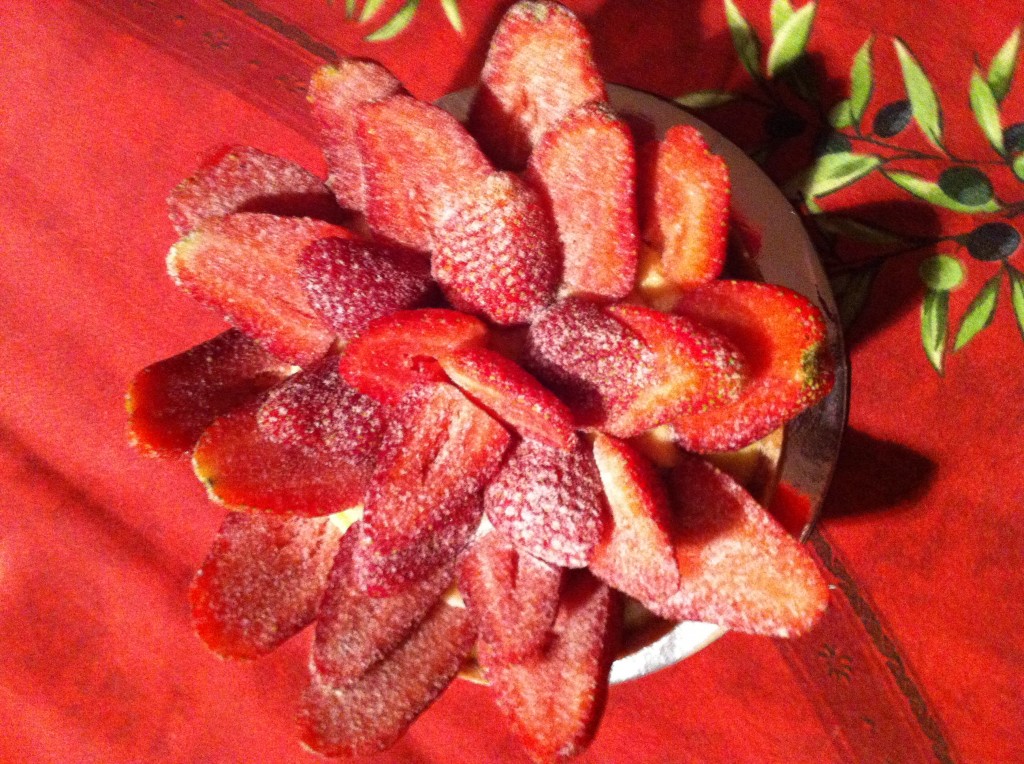
Delicious home-grown strawberries
If you have Less than Half a day of direct sun or Full shade or even Indoors your options start to become increasingly limited. With less sun i would suggest herbs like mint, leafy salad herbs such as various Lettuces, Rocket, Pak Choi will do ok in a shadier spot. Also you could take your pick from herbs such as Parsley, Oregano, Chives, Celery, but generally they will always do better in more sun. As you would grow a Kaffir Lime for its leaves this is one plant that would be more suited to a less sunny position, a Curry Leaf Plant or even a Bay Leaf Tree may also fall into this category. To some extent Strawberries could also provide a good option in a less sunny position.
I hope you find these suggestions useful, feel free to direct any questions or discussion on stock or availability to our
email address or
Facebook wall.
We also have a great team here to assist and advise you on your next purchase for your edible garden no matter what the position.
Plants that Flower in the Shade
Welcome all to our inaugral entry for the Gardening Advice page.
This first Topic of Discussion is a regular occurence encountered by City dwellers with a shady garden or balcony, especially as the sun moves around over the course of the year. In this segment we hope to provide you with some suggestions on something colourful to plant in that hard to grow shady area!
Our best suggestion is a couple of wonderful plants from the ABUTILON family. The Brazilian Bell Flower (red flowering abutilon) and the Triple Planted Chinese Lantern (3 Colours same plant – Red, Yellow, Orange) are hardy weeping standard type plants that will suit almost every aspect in your outdoor Garden. They can be grown in the ground or in pots and will grow to between 2.5 -3 m tall and tolerate both sun and shade!
Remarkably these plants flower all year round !
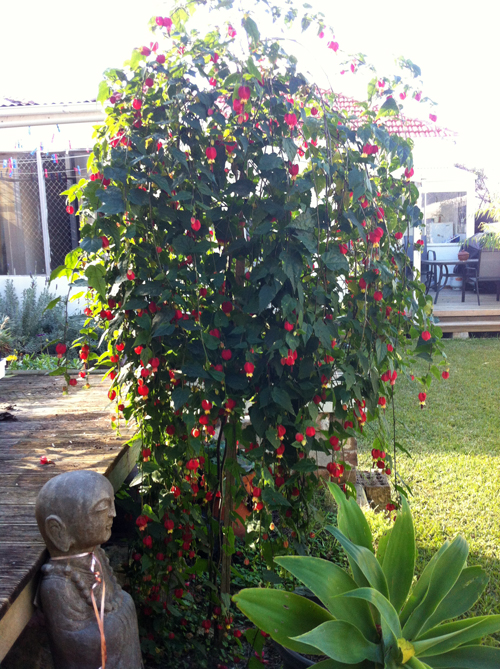
Brazilian Bell Flower - Weeping Standard Abutilon
We have these plants specially grown and available in Spring and Summer, so if you are interested dont hesitate to put your name down in store.
Other reliable plant options to provide colour in a shaded area is these striking RED ANTHIRIUMS. They also flower all year round and come in other colours such as Pink, White and sometimes Purple. We know they also do wonders as a colourful Indoor Plant. PEACE LILLIES are another hardy option for the shade or indoors.
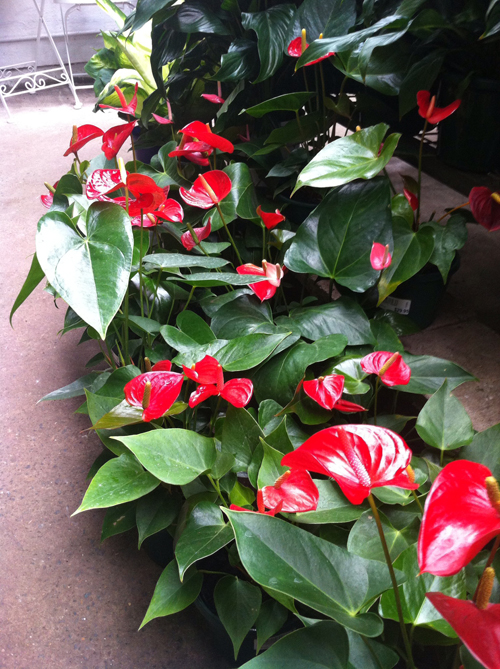
Red Anthirium
Other extremely tough plants include CLIVEAS (Orange and Yellow) or AGAPANTHUS (Blue and White), however their flowering is generally limited to the Spring and Summer months. The Winter period sees AZALEAS, CAMELIAS come into their own, typically renowned as a shade loving plants, however certain varieties are now bred to appreciate a bit more sun. A combination of both flowering patterns would hopefully bring colour to your garden at different times of the year. Some lower growing Cliveas / Agapanthus beneath the taller Azalea or Camellia could provide great contrast.
Also why not try the spreading NATIVE VIOLET as a groundcover in the shade with delicate flowers all year round.
Great news to brighten up your Shady Garden or Balcony area long term !



